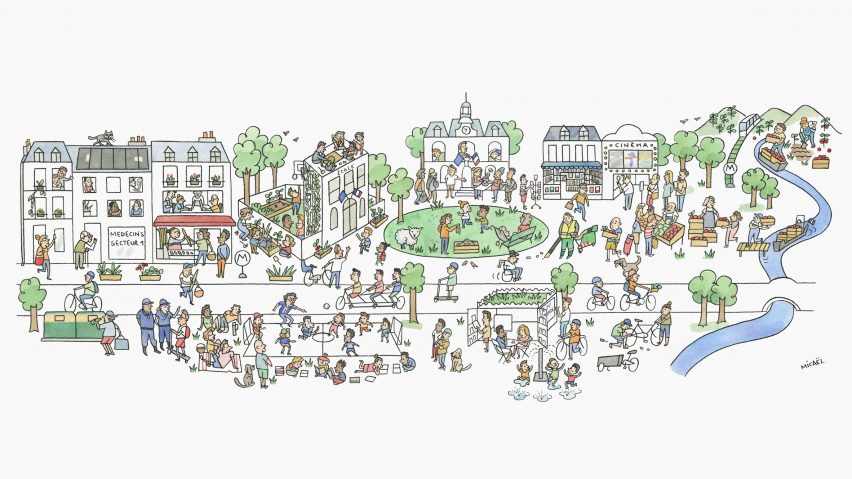The 15-minute city concept has repeatedly made the news this year. Here, we explain what the urbanism concept is and why it has become so controversial.
What are 15-minute cities?
The 15-minute city is an urban planning concept that, as its name suggests, aims to create communities where people can access key amenities by travelling no more than 15 minutes on foot or by bike.
The concept encourages the development of cities with multiple centres, with offices, shops, restaurants and entertainment placed locally, reducing the need to drive. It does this through policy and urban interventions.
By reducing dependency on vehicles and encouraging active travel, it aims to both help reduce carbon emissions and air pollution and improve the health of people.
Who invented the 15-minute city?
Although many of the ideas contained within 15-minute cities have existed for a long time, the concept was created by French-Colombian urbanist Carlos Moreno. He has been an associate professor at Sorbonne University in Paris since 2017.
In 2021, Moreno was awarded the Obel Award for creating the concept.
When was the 15-minute city invented?
Following five years of research, Moreno unveiled the concept, named ville du quart d'heure in French, at the Paris United Nations Climate Change (COP21) Conference in 2015.
It was popularised after Paris mayor Anne Hidalgo embraced the concept in 2019 and then used it during her re-election campaign in 2020, for which Moreno acted as scientific advisor.
Why are 15-minute cities controversial?
In a development that Moreno told Dezeen was "shocking", the concept has become the basis of a conspiracy theory that 15-minute cities form part of a wider plan to restrict people's movement. Conspiracy theorists believe the proposals could be used to prevent people from travelling more than 15 minutes from their homes.
This theory gained traction last year following a plan by Oxford council to restrict travel on six roads during certain times of the day to reduce congestion. A well-shared article suggested that the plan would "lock residents into one of six zones" and an estimated 2,000 anti-15-minute city demonstrators took to the streets in protest of the council's plans.
Although widely debunked, the theory forms the basis for continued criticism of existing traffic-reducing measures in the UK, including Low Traffic Neighbourhoods.
This idea was echoed by UK member of parliament Nick Fletcher, who said that the measures "will take away personal freedoms".
In an interview with Dezeen, Moreno refuted this.
"They say from their home we have a radius of 15 minutes, a circle and they will be blocked inside this area," explained Moreno.
"But in reality, when this is embraced, we develop a polycentric city with a lot of new bike lanes, new pedestrian areas and to propose a lot of different services in our city."
The 15-minute city has also been attacked by some who believe that its aim is to make life harder for those who want to drive. As the concept involves encouraging walking and cycling, compared to driving, it can include policies that aim to disincentivise car use – such as fines for driving down some residential streets.
As part of his plan to slam the brakes on "anti-car measures" UK prime minister Rishi Sunak recently announced that he will "stop councils implementing" 15-minute cities.
In response to the ban, Moreno told Dezeen that the policy was "tantamount to aligning" with conspiracy theorists.
Where are 15-minute cities being implemented?
Along with Paris, the 15-minute city concept has informed policy in numerous urban areas around the world, including Buenos Aires, Chengdu, Melbourne, Shanghai, Houston and Edmonton, among others. The C40 Cities network promoted the concept as a way for metropolitan areas to recover from Covid-19.

